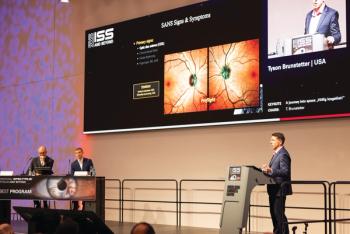
Using OCT to assess anterior chamber inflammation
The clinical assessment of an anterior chamber inflammatory reaction may be difficult to determine in eyes where corneal clarity is reduced by corneal oedema. Slit lamp examination is currently the gold standard method to assess inflammation1-3 but in conditions such as poor corneal clarity, the clinician routinely encounters difficulties.
The clinical assessment of an anterior chamber inflammatory reaction may be difficult to determine in eyes where corneal clarity is reduced by corneal oedema. Slit lamp examination is currently the gold standard method to assess inflammation1-3 but in conditions such as poor corneal clarity, the clinician routinely encounters difficulties.
In this study, we used high-speed anterior segment optical coherence tomography (OCT) to quantify changes in the morphology of anterior chamber inflammation.
OCT is an imaging modality that allows high-resolution, cross-sectional imaging of the eye,4-7 and has thus been shown to have roles in various clinical situations.8-14 Although anterior chamber cell grading has been reported with high-speed OCT in uveitis patients,6 to our knowledge this is the first study to assess all parameters of inflammation, namely anterior chamber cells, keratic precipitates, fibrinous membrane and endothelial infiltrate in eyes with a clear and oedematous cornea.
Sixty-two eyes of 45 patients from the outpatient clinic of Dr Agarwal's Eye Hospital and Eye Research Centre in Chennai, India were studied between August and November 2007.
Eyes with acute and chronic idiopathic anterior uveitis, postoperative uveitis, panuveitis, herpetic keratouveitis, interstitial keratitis, corneal ulcer, posterior corneal abscess and endophthalmitis were included in the study group. All patients had non-granulomatous uveitis.
All eyes underwent comprehensive slit lamp examination and the anterior chamber reaction was graded from 0 to 4+ using Standardization of Uveitis Nomenclature (SUN).15 Topical 1% homatropine was used for pupillary dilatation.
Newsletter
Get the essential updates shaping the future of pharma manufacturing and compliance—subscribe today to Pharmaceutical Technology and never miss a breakthrough.












































